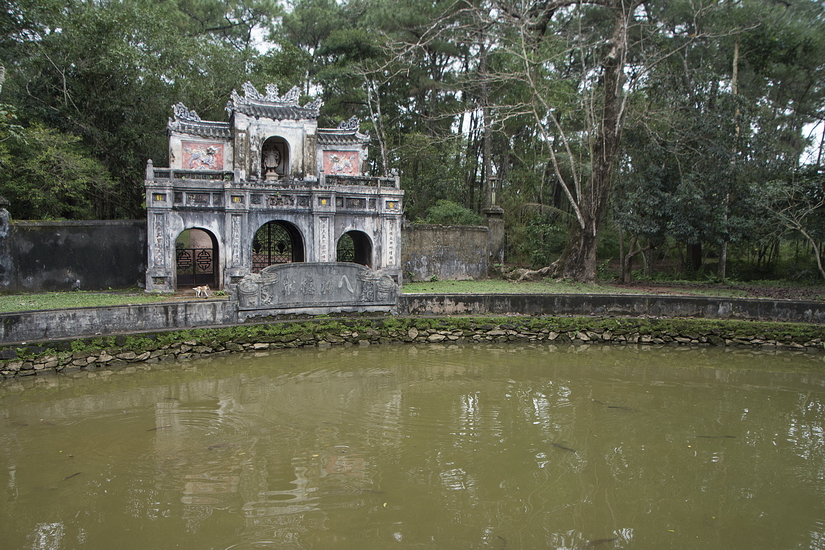Traditional
Hue
Photos Home
Countries
Vietnam
Hue 2018
Ho Chi Minh City 2018
All
photos on this page
© John Holstein 2018
© John Holstein 2018
Hue is Vietnam's old imperial city. In the Battle of Hue, in 1968, there was a lot of destruction of traditional buildings--palace, homes, temples and shrines--but there is still enough to keep you exploring for a month. If you rent a bicycle you can see everything in Hue city and its outskirts.
By the way, the word chua seems to mean all of temple, shrine, pagoda, and mausoleum.

Chua
Bao Quoc. This old temple is still in use. Check out a few inside
shots.
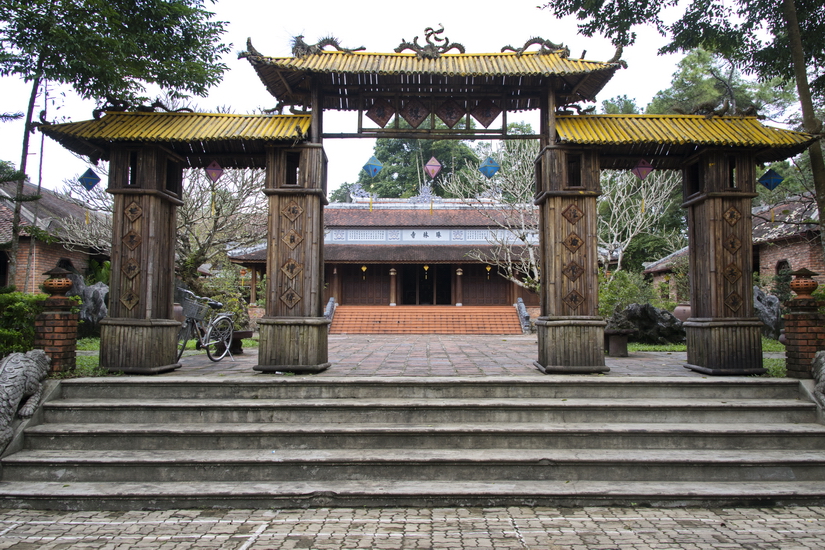
Chua
Chau Lam, though an ancient temple, sports an untradional gate made of
bamboo. . .
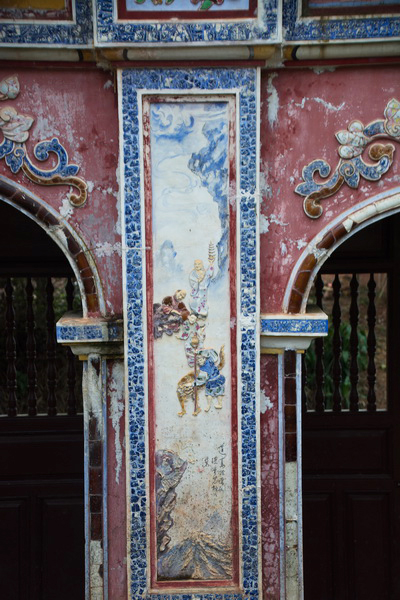
.
. . but its mosaic bas-relief artwork is traditional.

Taoist
temple Ðình Làng Duong Xuân, just 30 minutes'
walk southwest of Chua Bao Quoc. Find out more about this intriguing temple
here. (NEWS
FLASH: I later discovered that Ding Lang, which I thought is part of the
name of the temple, means village, and Duong Xuan is the name of the village.)

Guarding
the main hall at Chua Linh Quang.

The
neighborhood entrance to Chua Linh Quang.
The
main gate to Chua Tu Hieu. More photos here.
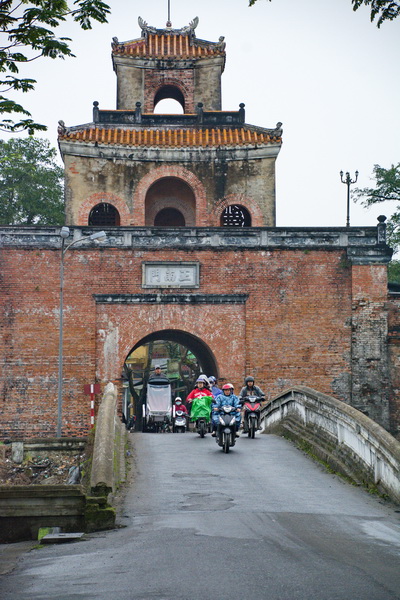
In 1968, during the American war, the Viet Cong took over the Citadel, and when the Americans tried to dislodge the Viet Cong, they destroyed many of the buildings. Since then, the country been restoring the damaged buildings, fortunately using excellent techniques to maintain the feeling of antiquity. You can see a few photos here.

A
comparatively humble clan memorial shrine in the middle of rice paddies.

At
Khai Dinh Palace, 20 minutes' drive out south of city center, all of the
mosaic bas-relief art--on the walls, the throne base, the canopy--is ceramic
tiles, porcelain shards and broken bottle glass. "Probably the most
famous 'old' mosaic in Vietnam is the tomb of the Emperor Khai Dinh (reigned
1916-1925) located in the countryside outside of Hue. The tomb was built
from 1920-1931 and was so elaborate that taxes in Vietnam had to be increased
by 30 percent to pay for it. I estimated the three main chambers of the
mausoleum to be each 20 feet tall, and at least 350 square feet each in
size. The mosaics stretch from floor to ceiling on every wall and on the
tomb dais itself. Background walls are dyed either a creamy yellow or
a peachy skin pink. A layer of clear glass cut in trapezoidal shapes and
placed vertically in a herringbone style pattern covered the painted walls.
Images on these walls are either flat, partially bas-relief by reason
of their projecting materials, or are truly bas-relief by virtue of built-up
forms of plaster and/or cement. Finer details, such as leaves or tassels,
are usually made with green or brown cut bottle glass. In addition, judicious
use of the patterns on the broken porcelain pottery along with paint and
the dyed plaster and/or cement helps to emphasize shapes. As best I could
determine, mosaic materials appear to have come from France, China, and
Japan." ("Mosaic
of Emperor Khai Dinh")

Phu
Tuy Ly Vu'o'ng might look run-down, but there is some good art inside.
Check it out.
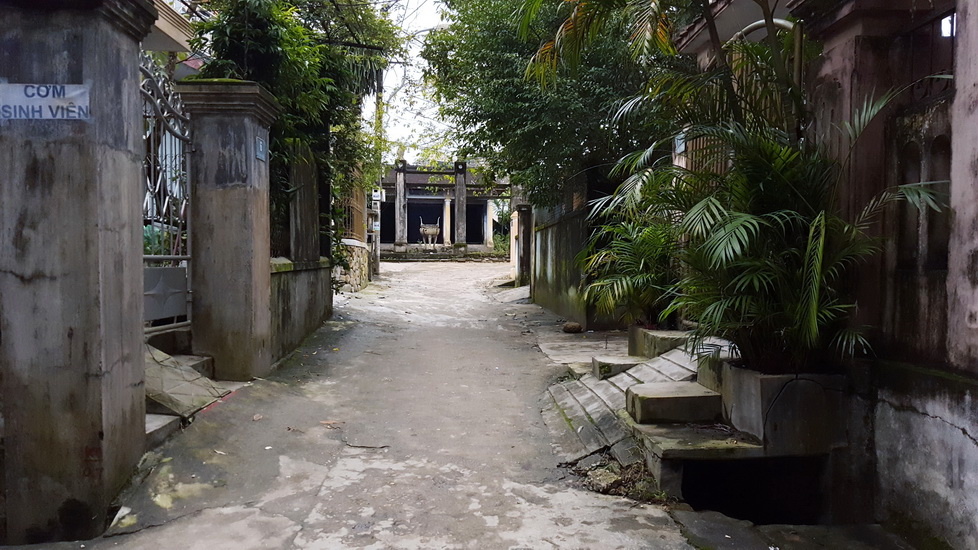
A
deserted shrine in Boi Chau Lane. I was lucky to notice this from the
main road. But is it really deserted? A few hints here.
Back to Hue
2018
